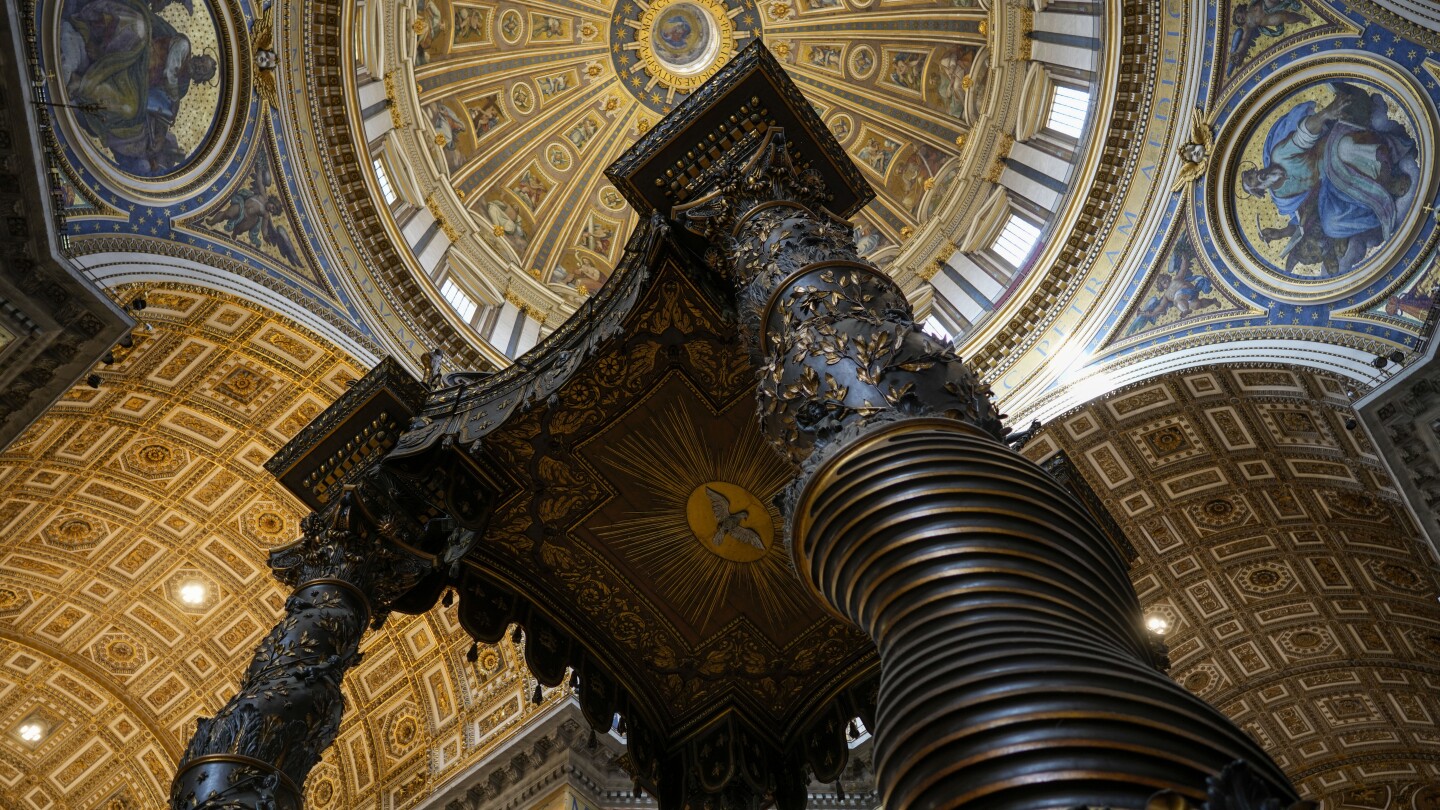VATICAN CITY (AP) — The Vatican on Thursday unveiled plans for a yearlong restoration of the monumental baldacchino, or canopy, over the main altar of St. Peter’s Basilica, pledging to complete the work on Bernini’s masterpiece before Pope Francis’ big 2025 Jubilee.
The price tag? About 700,000 euros ($770,000).
The restoration and conservation project, funded entirely by the Knights of Columbus and using the expertise of Vatican Museums ’ restorers, marks the first comprehensive work on the 10-story tall baldacchino in 250 years.
The structure, which is positioned over the basilica’s main altar to provide a ceremonial covering for the tomb of St. Peter underneath, dates from the 1620s-1630s, when Pope Urban VIII commissioned Gian Lorenzo Bernini to create a canopy for the apostles’ tomb.
The baldacchino is considered one of the most complicated multi-material art works of all time, with its marble, bronze, wood, gold, and iron. It eventually involved numerous other artists and craftsmen, including the master architect of the period, Francesco Borromini.
The canopy’s four massive twisting columns, featuring gilded cherubs and laurel branches, were inspired by the marble columns that surrounded St. Peter’s tomb in the ancient basilica, which stood on the site of today’s St. Peter’s, the biggest church in the world.
Cardinal Mauro Gambetti, who is in charge of the basilica, unveiled the restoration project at a news conference on Thursday. He said that the works, including a massive scaffolding to cover the 29-meter high canopy, would allow all liturgical celebrations to continue throughout the year, and would be completed by December.
Pietro Zander, in charge of the artistic patrimony of the basilica, said the restoration mostly involves a systematic cleaning of the dust-and-grime covered structure. That’s no easy task given it features at its height four, 2.5-ton statues of angels, perched atop the 9 ton-columns.
Other work is aimed at conservation amid evidence that some pieces are coming apart. In addition, some of the materials have suffered centuries of degradation from changes in temperature and humidity thanks to the 50,000 people who pass through the basilica on any given day, changing its microclimate, he said.
“A prerequisite for planning the work is in fact the knowledge that we are dealing with a giant,” Zander said. “A giant of art of all time, but even before that, a giant in form and size.”
Pope Francis is to inaugurate a Jubilee year by opening the basilica’s Holy Door at the beginning of 2025.

